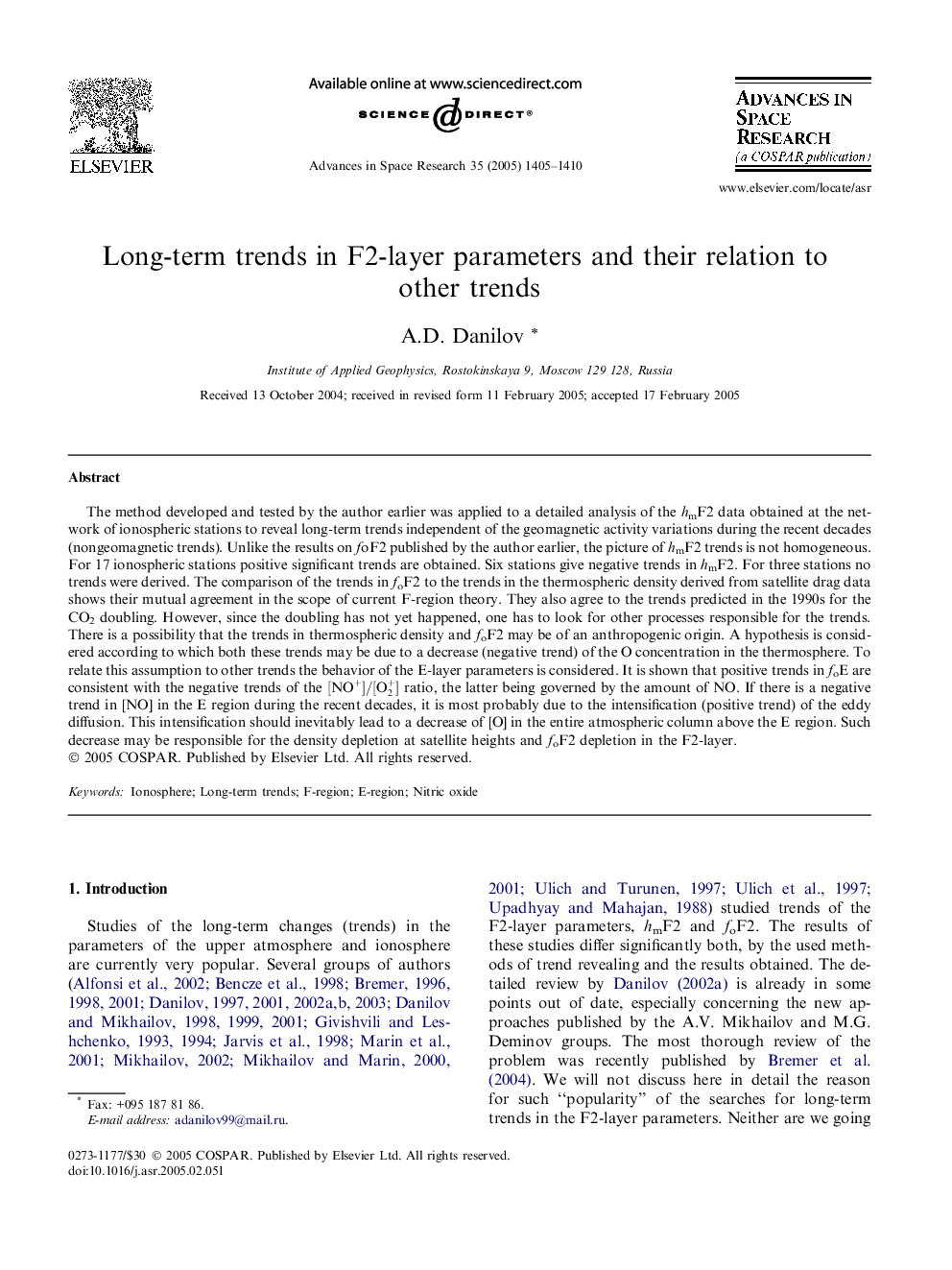| کد مقاله | کد نشریه | سال انتشار | مقاله انگلیسی | نسخه تمام متن |
|---|---|---|---|---|
| 10695757 | 1020280 | 2005 | 6 صفحه PDF | دانلود رایگان |
عنوان انگلیسی مقاله ISI
Long-term trends in F2-layer parameters and their relation to other trends
دانلود مقاله + سفارش ترجمه
دانلود مقاله ISI انگلیسی
رایگان برای ایرانیان
کلمات کلیدی
موضوعات مرتبط
مهندسی و علوم پایه
علوم زمین و سیارات
علوم فضا و نجوم
پیش نمایش صفحه اول مقاله

چکیده انگلیسی
The method developed and tested by the author earlier was applied to a detailed analysis of the hmF2 data obtained at the network of ionospheric stations to reveal long-term trends independent of the geomagnetic activity variations during the recent decades (nongeomagnetic trends). Unlike the results on foF2 published by the author earlier, the picture of hmF2 trends is not homogeneous. For 17 ionospheric stations positive significant trends are obtained. Six stations give negative trends in hmF2. For three stations no trends were derived. The comparison of the trends in foF2 to the trends in the thermospheric density derived from satellite drag data shows their mutual agreement in the scope of current F-region theory. They also agree to the trends predicted in the 1990s for the CO2 doubling. However, since the doubling has not yet happened, one has to look for other processes responsible for the trends. There is a possibility that the trends in thermospheric density and foF2 may be of an anthropogenic origin. A hypothesis is considered according to which both these trends may be due to a decrease (negative trend) of the O concentration in the thermosphere. To relate this assumption to other trends the behavior of the E-layer parameters is considered. It is shown that positive trends in foE are consistent with the negative trends of the [NO+]/[O2+] ratio, the latter being governed by the amount of NO. If there is a negative trend in [NO] in the E region during the recent decades, it is most probably due to the intensification (positive trend) of the eddy diffusion. This intensification should inevitably lead to a decrease of [O] in the entire atmospheric column above the E region. Such decrease may be responsible for the density depletion at satellite heights and foF2 depletion in the F2-layer.
ناشر
Database: Elsevier - ScienceDirect (ساینس دایرکت)
Journal: Advances in Space Research - Volume 35, Issue 8, 2005, Pages 1405-1410
Journal: Advances in Space Research - Volume 35, Issue 8, 2005, Pages 1405-1410
نویسندگان
A.D. Danilov,